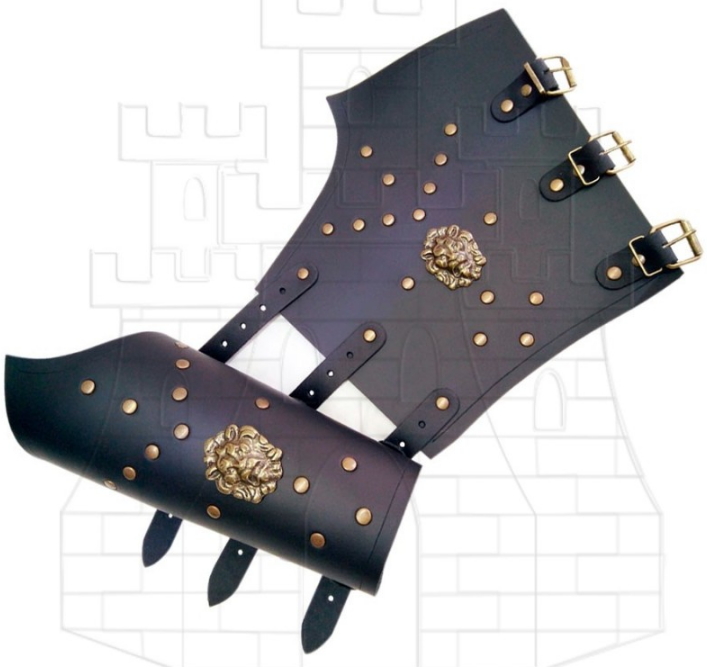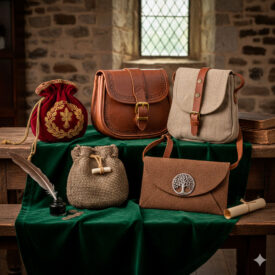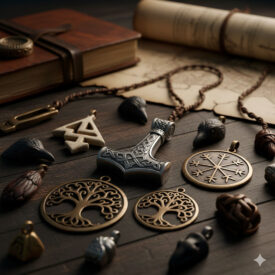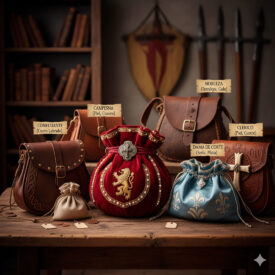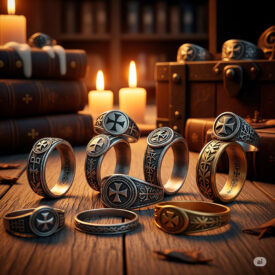Hello, history and jewelry lovers! Today we embark on a fascinating journey into the past to explore the world of Roman bracelets, pieces that go far beyond a simple adornment. These objects are true bearers of a rich cultural heritage, weaving stories of tradition, beliefs, and social status through the centuries.
The Roman civilization, at its peak between the 1st century BC and the 2nd century AD, was a melting pot of cultures, wealth, and expansion. It is no surprise that their goldsmithing, including bracelets, is the result of a masterful fusion of Etruscan, Greek, and Egyptian influences. Far from being mere accessories, Roman jewelry was deeply rooted in social and cultural meaning, used in ceremonies, as powerful protective amulets, and as clear symbols of power and social position. The art of goldsmithing was highly respected, and workshops flourished throughout the vast empire.
Although in the early days of the Roman Republic austerity in personal adornment was promoted, reserving gold for military awards, this radically changed with the arrival of Emperor Octavian Augustus. Peace in the conquered territories and contact with various cultures unleashed an inclination for luxury that grew exponentially throughout the 1st century.
From the Battlefield to Everyday Luxury: The Meaning of Bracelets
For the Romans, the bracelet was not just an ornament but an important social marker. One of its most notable functions was as a military reward, a tradition believed to have been learned from the Persians and Medes. These consisted of gold, silver, or metal ornaments, which legionaries received from their general as decorations for their feats of war, and they usually wore them on the right arm.
These military bracelets were sometimes engraved with the recipient’s name, the action that earned them the distinction, and the name of the general in charge of the battle. The pride they inspired was such that some legionaries would wear several bracelets at the same time, showing not only their own decorations but also those they had taken from the enemy as war trophies. The bracelet was, without a doubt, an important part of their military dress and a clear symbol of their bravery and honor.
With the expansion of the Empire and the consolidation of peace, the availability of gold and silver increased considerably. This allowed the bracelets, originally a military distinction, to become popular as personal accessories in daily life, thus reflecting a shift in the Roman mentality toward luxury and ostentation.
Materials and Design: A Reflection of Roman Society
The diversity of Roman bracelets is astonishing, adapting to the fashions and needs of all social classes. The choice of material and design often communicated the wealth and status of the wearer.
Materials: Beyond Metal
- Gold and Silver: Initially reserved for the nobility and as military awards, gold became the most valued metal for its durability and malleability. Over time, both metals became more accessible to the Roman elite, who used them in elaborate jewelry to show their power and wealth.
- Bronze: Affordable and durable, bronze was the preferred material for jewelry of the lower social classes. Its versatility allowed for the creation of detailed and lasting pieces, making it very popular in workshops throughout the empire.
- Precious and Semi-Precious Stones: The Romans used a wide variety of gems, each with a particular meaning. Garnet, for example, was valued for its supposed healing properties, while jet was used as a protective amulet, especially for children and women. Carnelian was perfect for seals, and rock crystal was associated with purity and health.
- Glass and Organic Materials: Glass, introduced via trade with the Phoenicians and Egyptians, was often used to imitate gems. Materials such as bone, ivory, and sea shells were also used, especially in everyday pieces or as amulets.
Designs and Symbolic Forms
Roman bracelet designs were as varied as their materials. One of the most iconic motifs is that of the coiled snake, a symbol representing immortality, renewal, and protection. Other designs included animal heads, geometric motifs, or the Opus Interrasile technique, which created a delicate openwork lace in metal, popular in later centuries of the Empire. These elements of style and craftsmanship demonstrate the technical mastery of Roman goldsmiths and their ability to combine beauty with symbolic meaning.
Deep Symbolism and Social Function
In ancient Rome, a piece of jewelry was much more than just an ornament; it communicated crucial information about the wearer, from their wealth and social position to their personal beliefs. Jewelry was inextricably linked to the identity and role of each individual in society.
Jewelry, Amulet, and Protection
In addition to symbolizing status, many bracelets served as powerful protective amulets against disease, spells, envy, or the evil eye. Symbolic forms such as the phallus, associated with fertility and good luck, or the crescent moon, linked to the goddess of the Moon, were used. Even certain colors, such as the red and blue of gems, were believed to have protective power. The bulla, a drop-shaped amulet, was a clear example of the protective function of jewelry, given to freeborn boys at birth and worn until adulthood to protect them from evil.
Gender Roles in Jewelry
There were notable differences in the use of jewelry between men and women. Men generally wore more functional jewelry, such as signet rings and fibulae to fasten their togas. Roman women, however, were famous for their fondness for jewelry, wearing diadems, earrings, necklaces, and, of course, bracelets. This feminine “weakness for luxury” was so notable that it even led to the promulgation of the Lex Oppia, a law that sought to restrict how much jewelry they could own. However, the matrons mobilized and managed to have it repealed, demonstrating the importance of jewelry in their identity and social status.
The Legacy of Roman Bracelets in Modern Jewelry
Bracelets have existed for over two thousand years and their relevance remains undiminished. Greeks, Romans, Persians, and Ottomans, among others, have valued the bracelet as a symbol of prestige, strength, reward, or personal defense. Today, the legacy of Roman goldsmithing lives on. Modern designers and jewelers find inspiration in their motifs, forms, materials, and techniques. Techniques such as engraving, embossing, and stone setting continue to be pillars of contemporary jewelry. Roman-style elements, such as architectural lines and geometric designs, or symbolic motifs like the coiled snake, are constantly reinterpreted in current collections, demonstrating the durability of their designs and their aesthetic strength.
The ongoing preservation and study of these archaeological treasures are vital, not only to understand the past but also to enrich the present creation of jewelry. Thus, Roman bracelets are not just vestiges of a distant civilization, but an eternal testimony of art, skill, and meaning that continues to inspire.
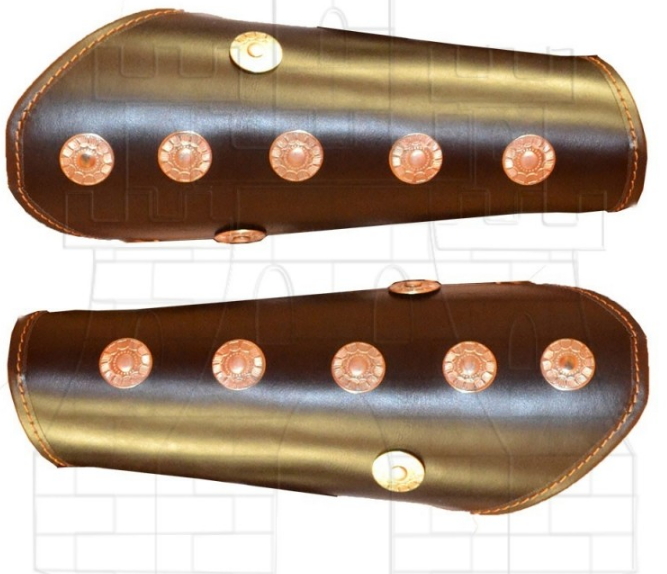 If the history and symbolism of Roman bracelets have fascinated you, we invite you to explore our collection of Roman bracelet replicas, as well as our full Roman-themed shop, where you can find pieces that will transport you directly to the times of the Empire.
If the history and symbolism of Roman bracelets have fascinated you, we invite you to explore our collection of Roman bracelet replicas, as well as our full Roman-themed shop, where you can find pieces that will transport you directly to the times of the Empire.

